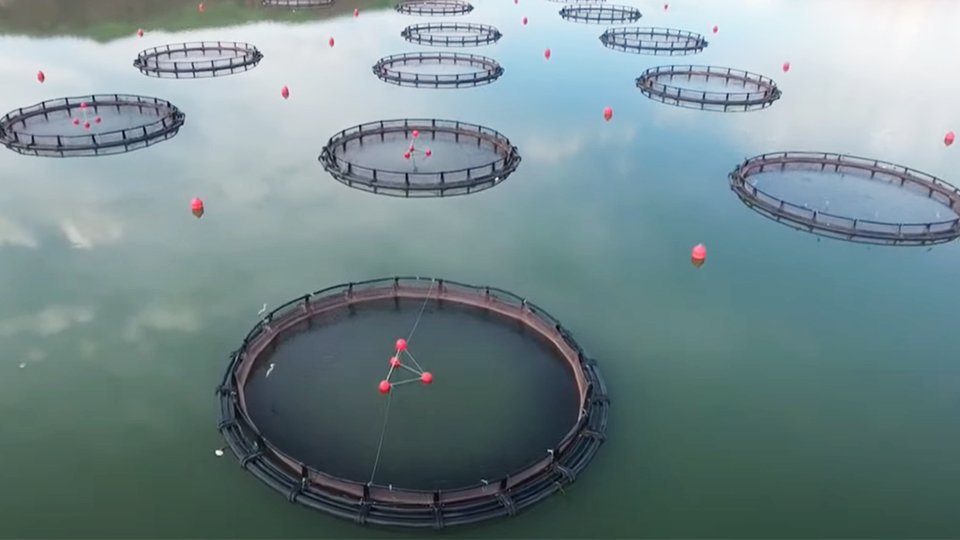Mooring System in Marine Farming Industry
With the continued growth of the global population and evolving dietary patterns, the demand for high-quality protein, such as seafood, is increasing. Marine aquaculture has become a vital industry in meeting this demand. Among the many challenges facing marine aquaculture, proper mooring and anchoring of cages is a key technical foundation for sustainable operations.
The Importance of Proper Mooring and Anchoring
In marine aquaculture, mooring and anchoring systems are not only technical requirements but also core elements for successful aquaculture and environmental sustainability. Firstly, these systems are crucial for maintaining the stability of the cage structures. The marine environment is dynamic and volatile, with complex hydrological conditions such as currents and waves, and extreme conditions can even produce large surges. Stable mooring effectively prevents cage damage and fish escape, thereby avoiding economic losses and ecological risks such as invasive alien species.
Secondly, a well-designed mooring and anchoring system helps mitigate the impact on the surrounding ecological environment. By reliably securing the cages, the risk of friction or dragging on the seabed is reduced, thereby protecting benthic habitats, preventing bottom disturbance and sediment resuspension, and maintaining water quality and ecological health.
Furthermore, a good mooring system can improve the well-being of farmed fish. A stable cage structure reduces the constant swaying caused by currents and waves, reducing stress in the fish, promoting growth performance, increasing survival rates, and overall health, ultimately enhancing the quality and economic benefits of the aquaculture products.

Common Mooring and Anchoring Methods
Underwater Weights
Underwater weights are a simple and effective mooring method. They typically use weights such as concrete blocks or large stones, fixed to the corners or frame of the cage. They use gravity to balance the forces exerted by currents and waves on the cage, maintaining its position. The suitability of this method depends on the water conditions: smaller weights can be used in areas with slow currents, while larger weights are required in areas with turbulent currents or greater depths to ensure system stability.
Marine Anchors
Marine anchors are a type of mooring equipment widely used in marine aquaculture, offering strong bottom-gripping and tensile strength. Typically made of steel, they are deployed at strategic points around the aquaculture area and connected to the cages via high-strength cables or chains, forming a distributed anchoring network. This method is particularly suitable for areas with strong currents. Its multiple anchor points provide redundancy, maintaining overall system stability even if a single anchor fails.
Grid Platform
In deep waters or areas with complex seabed topography, a grid platform can be used as a mooring foundation. This structure is typically constructed from steel pipes or concrete piles on the seabed, forming a rigid support frame. The cages are connected to the platform via mooring cables. The grid platform significantly limits cage movement, improving stability in harsh sea conditions. It also facilitates the layout and centralized management of multiple cages, making it suitable for large-scale aquaculture operations.
Mooring Buoy
A mooring buoy is a floating anchoring device, typically made of durable materials such as high-density polyethylene (HDPE). It is filled with buoyant material and connected to the cages via anchor chains or ropes, keeping them afloat and positioned. This method offers the advantages of flexible deployment and ease of relocation, allowing farmers to adjust the cage locations based on environmental changes or production needs. Installation and maintenance are also relatively simple, making it particularly suitable for small and medium-sized aquaculture operations.
Factors Influencing Method Selection
Selecting the appropriate mooring and anchoring method for a specific aquaculture project requires comprehensive consideration of multiple factors. Water depth is a key parameter. For example, heavy anchors may be suitable in shallow waters, while offshore anchors or grid platforms may be required in deeper waters. Wave characteristics (such as wave height, period, and direction) also directly influence system selection. High-energy sea areas require designs that are more robust and resistant to dynamic loads.
Seabed conditions, such as substrate type (sand, mud, rock), the presence of obstacles, and compatibility with other marine activities, must also be assessed. Rocky seabeds may hinder anchor grip, making platform-based mooring more feasible. Environmental sustainability requirements are also becoming increasingly stringent, requiring systems to minimize ecological disruption, such as avoiding sensitive habitats and using environmentally friendly materials.
Furthermore, regulations and standards are crucial in decision-making. Countries and regions have their own regulations for marine aquaculture mooring systems. Farmers must ensure that their design, installation, and operation comply with local policies to successfully obtain permits and avoid legal risks.
Conclusion
Mooring systems are a crucial component of marine aquaculture infrastructure, directly impacting aquaculture safety, ecological protection, and economic returns. By comprehensively understanding existing mooring and anchoring technologies and selecting them based on specific sea conditions and aquaculture needs, we can effectively promote efficient, environmentally friendly, and sustainable development of the marine aquaculture industry.
Related News:
Anchoring Analysis of Deep Water Wind-wave Resistant Net Cage
Why Are Norwegian Aquaculture Semi-Submersible?
What Are the Advantages And Risks of Farming Salmon in Chile?


